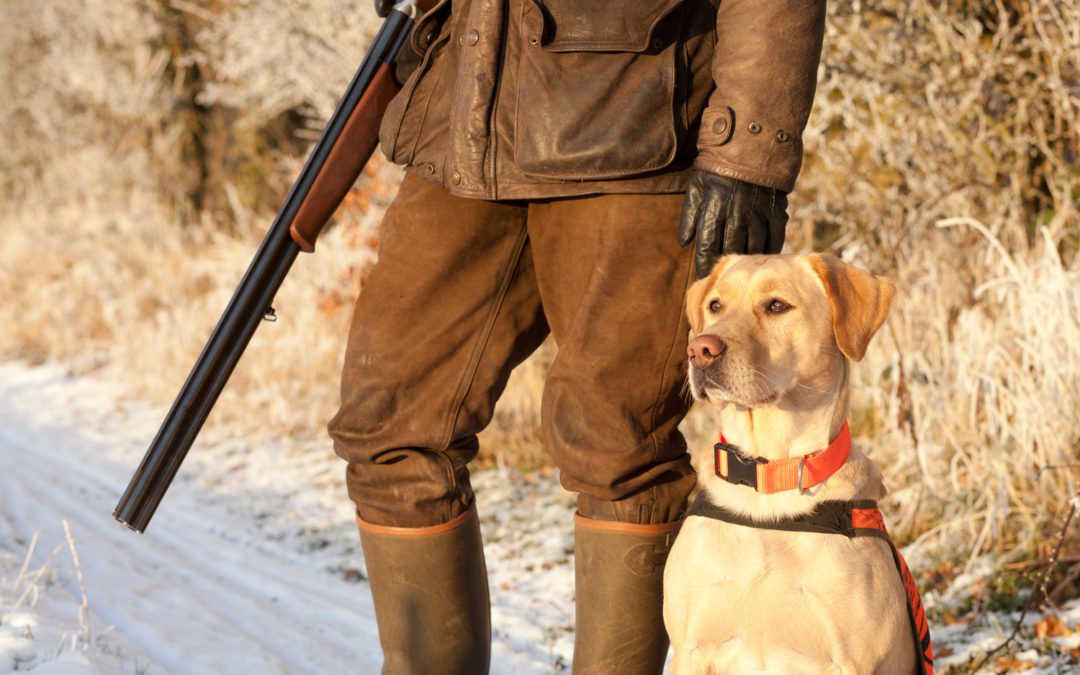Weather extremes make it difficult to train and keep your hunting dog sharp during the offseason. Just as you probably don’t want to work in kneedeep snow, heavy rain or brutally hot, humid days, neither does your dog. Professional gun dog trainers Paul McGagh, Clyde Vetter and Josh Miller use these simple, fun obedience drills, keeping the training sessions short and sweet, to keep a dog tuned up year-round, regardless of the weather.
1.Out of the Box
McGagh, of Glencoe Farm & Kennels in Bismarck, North Dakota, trains his Cocker Spaniels and English Springer Spaniels using small boxes or platforms he builds. “I call for the dog to sit or stand on the box. Then, I’ll add a second box and whistle for him or her to place from box to box. Finally, I’ll add retrieves with a tennis ball and have the dog retrieve from box to box,” he describes. This box drill can be made as simple or complex as needed for an individual dog and as indoor space allows.
2.Slow & Steady
Practicing the “place” command reinforces steadiness and control and can be done anytime, anywhere, whether it’s in the garage while working on the car or in the living room while watching the game. “Have your dog sit or stand (place) on a dog bed or platform and remain there until you give him or her the appropriate command to release,” explains Miller, of River Stone Kennels in New Richmond, Wisconsin. “This drill doesn’t even require your undivided attention — just be sure your dog stays in your peripheral vision so you can make a correction if needed.”
3.Follow the Leader
To ensure a quiet, controlled hunting dog, Vetter, of Sharp Shooter’s Kennel in New Richmond, Wisconsin, recommends advanced heeling drills, which can be done simply as you walk around the house. “I train a dog to heel in a tight figure eight motion, shift into reverse and back up with me, and make small left and right clicks as if I were positioning him or her on a lining drill,” Vetter says. “I also teach that when I lead with my left foot, the dog is to heel. When I sidestep with my right foot, he or she is to ‘whoa.’ I overlay a command to an action, then wean the dog off the command as he or she becomes accustomed to my body language and actions.”
4.Hold, Carry & Release
Did your dog develop a bad retrieving habit this past hunting season? Now’s a good time to fix it so you can hit the ground running again come spring. “No matter how old or young your dog, it never hurts to get back to the basics,” Vetter advises. “Work on trained retrieves by running your dog up and down the training table. Use several different objects to reinforce what’s already been taught or to get a correction in as needed.”
5.At Your Command
Before you assume obedience 101 drills (such as “here,” “sit,” “kennel,” “down” and “no”) sound boring, think again. “Consider the next hunting season and the areas you’d like to polish with your dog before then,” says Miller. “More than likely, any of those skills will begin with rock-solid obedience.” Vetter agrees, “Lay or sharpen the foundation when the weather isn’t cooperating so that when you can get outside, the groundwork’s already covered.”
TIP FROM A PRO: “It is so important to train your dog every day, even if only for a few minutes. When you can’t go outside, indoor training in a garage or workshop is a great substitute. A physically and mentally engaged dog is a happy,well-behaved dog.” — Pro trainer Paul McGagh of Glencoe Farm & Kennels in Bismarck, North Dakota
PURINA PRO PLAN NUTRITION POINTER: It may be difficult during the holidays, but resist the temptation to offer your hunting dog human food or treats from your holiday spread. Not only can sharing table scraps add calories and create a beggar or finicky eater, it can be dangerous. Certain foods such as onions, garlic, leeks, chives, raisins, grapes, currants, xylitol (an artificial sweetener), alcohol, and yeast dough are toxic to a dog and could have harmful consequences if consumed. “It’s important to recognize what holiday human foods are toxic to a dog and be able to identify the corresponding signs (such as lethargy, vomiting or diarrhea) should your dog ingest any of these hazardous foods,” says Purina Chief Veterinary Officer Kurt Venator, DVM. “If you suspect your dog has consumed a toxic food, contact your veterinarian immediately so he or she can advise on the most appropriate course of action.”

